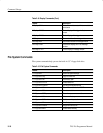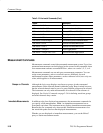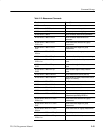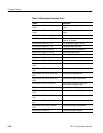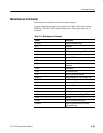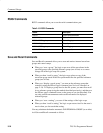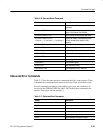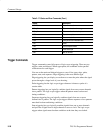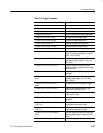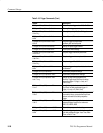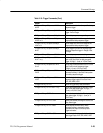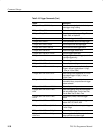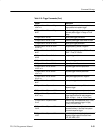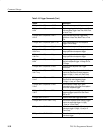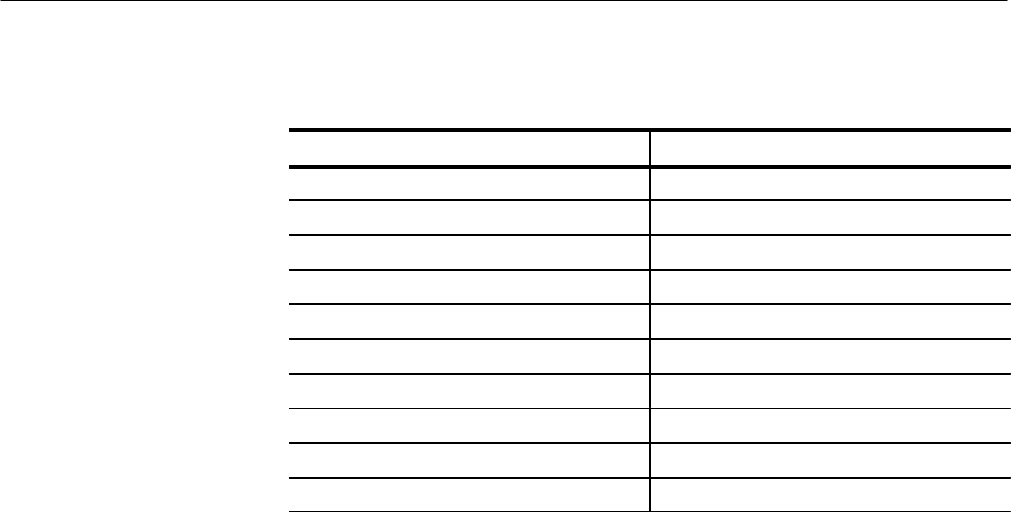
Command Groups
2–26
TLS 216 Programmer Manual
Table 2–17: Status and Error Commands (Cont.)
Header Description
EVENT? Return event code
EVMsg? Return event code and message
EVQty? Return number of events in queue
*OPC Operation complete
*PSC Power-on status clear
*PUD Query or set User Protected Data
*RST Reset
*SRE Service request enable
*STB? Read status byte
*WAI Wait to continue
Trigger Commands
Trigger commands control all aspects of logic scope triggering. There are two
triggers, main and delayed. Where appropriate, the command set has parallel
constructions for each trigger.
You can set the main and delayed triggers to one of five types: edge, pulse,
pattern, state, and sequence. Edge triggering is the most familiar type.
Edge triggering lets you display a waveform at or near the point where the signal
passes through a voltage level of your choosing.
Pulse triggering lets the logic scope trigger whenever it detects a pulse of a
certain width.
Pattern triggering lets you logically combine signals from one or more channels
into a pattern. The logic scope triggers when the pattern meets boolean and
timing conditions.
Sequence triggering lets you logically combine signals from one or more
channels into a pattern. The logic scope triggers when a sequence of two patterns
meet their boolean and timing conditions.
State triggering lets you logically combine signals from one or more channels
and provides a signal from a single channel to use as a clock. The logic scope
triggers when signals meet boolean conditions at the time they are clocked.



